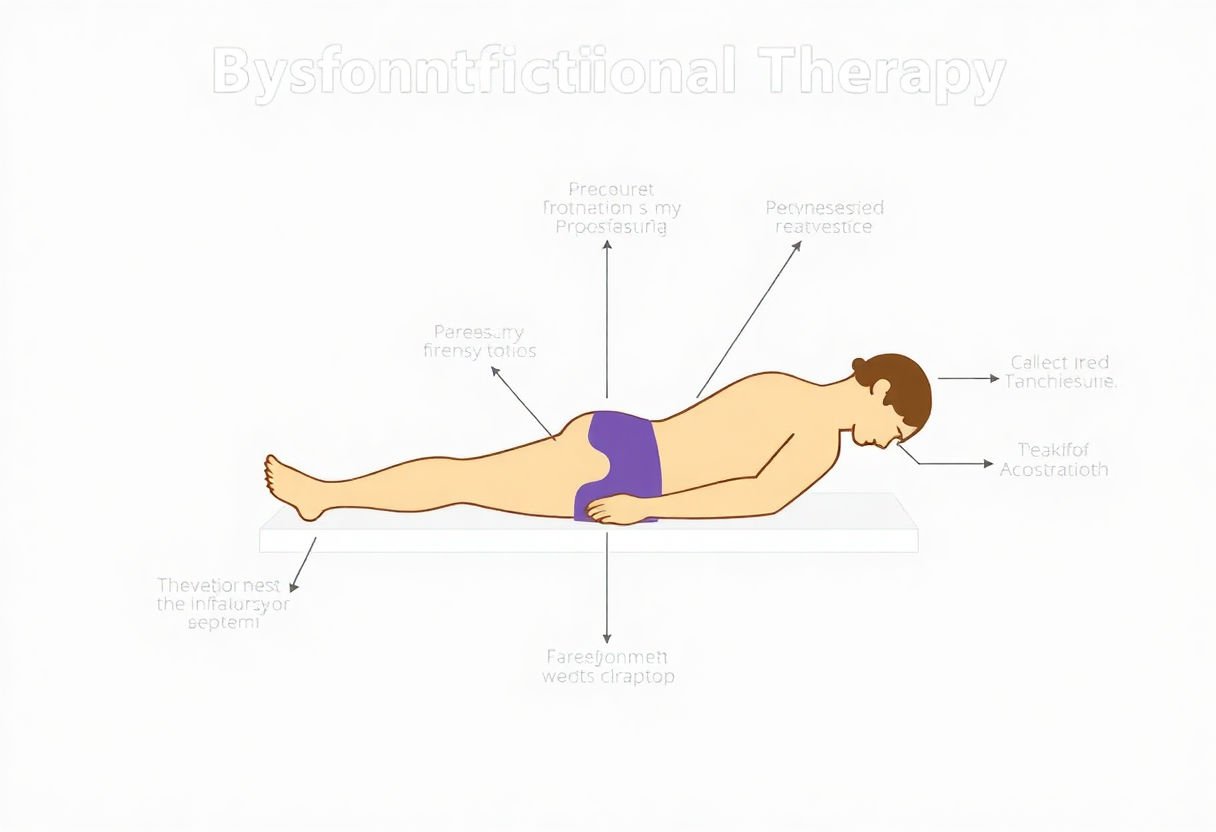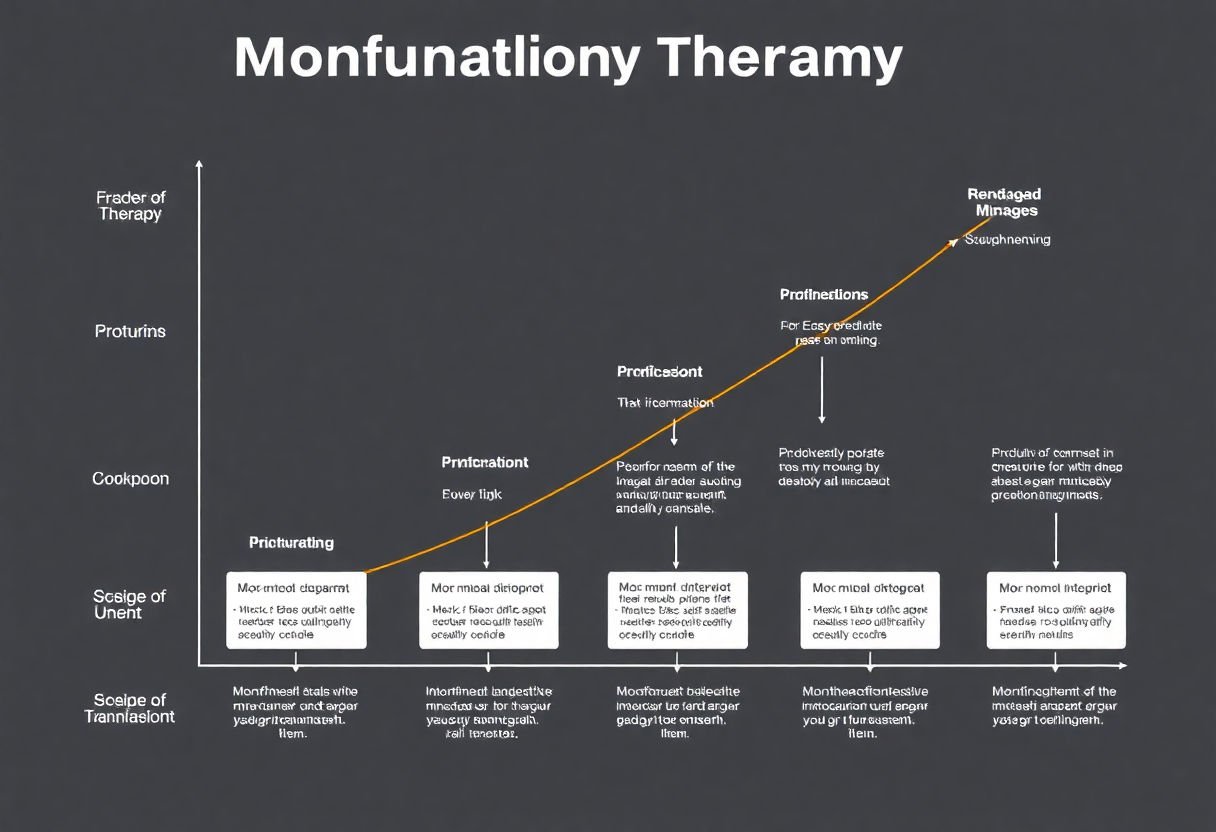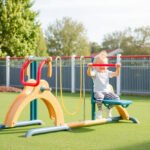Myofunctional therapy is emerging as a transformative approach to enhancing children’s health by focusing on oral function and overall wellness. This therapy revolves around exercises designed to improve tongue posture, swallowing, and breathing patterns, ultimately contributing to better sleep, speech, and dental health. As parents and caregivers become more aware of these profound benefits, understanding and incorporating these targeted exercises becomes crucial. This article delves into the fundamental aspects of myofunctional therapy, providing practical insights and strategies to integrate these exercises into daily routines, ensuring that children achieve optimal growth and development.
Key Takeaways
- Myofunctional therapy offers significant benefits for children’s oral health and overall wellness by addressing functional issues early on.
- Through targeted exercises, it supports the development of proper tongue posture and nasal breathing, which are essential for optimal growth.
- Early detection and intervention improve long-term health outcomes and prevent complications such as sleep apnea and orthodontic problems.
- Integrating these exercises into daily routines can enhance compliance and effectiveness, benefiting children more comprehensively.
- Active participation of parents and collaboration with healthcare professionals are crucial for achieving successful therapy outcomes.
What is Myofunctional Therapy?

Myofunctional therapy is a specialized program designed to address and improve the function of the muscles of the face, mouth, and throat. This therapeutic approach plays a pivotal role in enhancing the oral functions crucial for children’s development. Central to myofunctional therapy is the correction of orofacial myofunctional disorders (OMDs)—imbalances and dysfunctions in the muscle groups responsible for chewing, swallowing, and breathing.
Children undergoing myofunctional therapy participate in exercises tailored to enhance tongue posture, improve chewing efficiency, and promote nasal breathing. These exercises are designed to cultivate proper muscle tone and activity, which are essential for optimal dental alignment and overall facial development.
Myofunctional therapy is particularly beneficial in addressing issues such as mouth breathing, tongue thrusting, and incorrect swallowing patterns that, if left untreated, may lead to more significant complications like speech impediments or orthodontic problems.
By focusing on establishing correct oral habits early on, myofunctional therapy helps prevent future dental concerns and promotes better airway management, which can significantly improve sleep quality. This therapy stands as an integral part of a child’s healthcare plan, empowering them with healthier oral habits that lay the foundation for lifelong wellness.
An important aspect of myofunctional therapy involves collaboration with various healthcare professionals, including dentists, orthodontists, and speech therapists, ensuring a comprehensive approach tailored to each child’s unique needs. Through consistent practice and guidance, myofunctional therapy is essential in fostering a healthier, more functional lifestyle for children.
The Importance of Oral Function
Oral function plays a pivotal role in a child’s development, directly affecting breathing, chewing, swallowing, and speech. Ensuring that these functions are optimal from a young age can have lasting benefits on a child’s overall health and well-being.
Breathing is fundamental to life, and its quality can influence sleep, concentration, and growth. Children who primarily breathe through their mouth may experience disrupted sleep and may even develop facial structure issues. Myofunctional therapy aims to promote nasal breathing, which not only supports proper oxygen intake but also aids in the development of healthy oral structures.
The act of chewing is more than just preparation for swallowing; it actively contributes to jaw growth and alignment. Proper chewing practices stimulate saliva production, aiding digestion and maintaining oral health by neutralizing acids and removing food particles. Myofunctional exercises can help children learn how to chew effectively, facilitating better digestion and nutrient absorption.
Swallowing is another critical component, with potential impacts on dental health and speech clarity. A correct swallowing pattern involves the tongue pressing against the palate, which promotes the correct growth and alignment of the teeth and jaws. Therapy exercises are designed to retrain the tongue and facial muscles, ensuring that children develop a healthy swallowing technique.
Finally, speech is a key indicator of oral function. A child’s ability to articulate sounds correctly is heavily dependent on the coordination of muscles within the mouth and throat. By strengthening these muscles, myofunctional therapy supports clearer speech and effective communication.
Together, these aspects highlight the integral nature of oral function in a child’s growth, underscoring the importance of therapeutic exercises in achieving optimum health outcomes.
Identifying Signs Your Child May Need Therapy
Recognizing when a child might benefit from myofunctional therapy can be pivotal for their oral and overall health. Several distinctive signs may indicate the need for intervention. Breathing issues, such as habitual mouth breathing, not only affect oral health but can lead to disrupted sleep patterns and a lower level of oxygen intake crucial for growth and brain function.
Speech difficulties are another telltale sign. Challenges with articulation, mispronounced sounds, or delays in language development may benefit from the exercises, which strengthen the muscles involved in speaking. Additionally, myofunctional therapy can address swallowing concerns, such as difficulty swallowing pills or food textures, which might indicate improper tongue posture or weak oral muscles.
Observing oral habits, such as thumb sucking, prolonged pacifier use, or finger sucking, offers critical insights. These habits can lead to misaligned teeth or jaw issues if not addressed early. Dental problems, often manifested as crowded teeth or an overbite, may also signal the need for myofunctional intervention as these can stem from improper oral muscle function.
Parents may notice facial structure changes or asymmetries, which can result from imbalances in muscle function and might benefit from targeted therapies. Overall, being vigilant about these indicators enables parents and caregivers to seek professional advice and initiate proactive measures to ensure their child’s optimal physical and emotional well-being.
Effective Myofunctional Exercises for Kids
Incorporating myofunctional exercises into a child’s routine can significantly enhance their oral health and overall well-being. By engaging in consistent, targeted exercises, children can develop healthier oral habits leading to long-term benefits.
One effective exercise is the Tongue Push-Up, which focuses on strengthening the tongue’s muscles. To perform this exercise, have the child press their tongue firmly against the roof of their mouth, holding for a few seconds before releasing. This movement enhances tongue posture and encourages proper resting position.
Another crucial exercise is the Lip Closure Drill. Encourage the child to close their lips tightly, maintaining the position while breathing through the nose. This exercise helps in developing lip strength and promotes nasal breathing, which is essential for reducing mouth-breathing tendencies.
The Cheek Puff Exercise is also beneficial, where the child takes a deep breath and holds air in their cheeks before slowly releasing it. This action improves the muscles involved in chewing and swallowing.
Furthermore, consider practicing the Humming Exercise, where children hum a tune while keeping their teeth lightly touching. This activity promotes nasal breathing and aids in aligning the jaws correctly.
Incorporating a playful element into these routines, such as using a mirror for visual feedback or turning exercises into games, can increase the child’s interest and adherence. Remember that consistency is key, and even small daily efforts can lead to noticeable improvements in your child’s oral development. With persistence and encouragement, these exercises can lay the foundation for a lifetime of better oral health.
Incorporating Exercises into Daily Routines

Incorporating myofunctional exercises into a child’s daily routine can significantly enhance their oral health and overall well-being. The integration of these exercises should be seamless and enjoyable, promoting long-term adherence. Here are some practical strategies to embed these valuable exercises into everyday life:
-
Routine Consistency: Consistency is key when implementing new exercises. Designating specific times, such as after brushing teeth in the morning and evening, helps establish a predictable routine. This regularity ensures that myofunctional exercises become as habitual as brushing itself.
-
Incorporating Games: Transforming exercises into fun games can motivate children to participate willingly. Introducing elements of play, such as pretending to be a “superhero with a strong tongue,” can make the exercises engaging and enjoyable, fostering a positive attitude towards regular practice.
-
Mealtime Integration: Certain exercises can be naturally woven into meal and snack times. Encouraging children to chew food on both sides of the mouth or to swallow deliberately can strengthen the muscles involved in oral functions, effectively turning meals into therapeutic sessions.
-
Utilizing Reminders and Rewards: Setting reminders, such as using a timer or an engaging app designed to cue exercises, can enhance compliance. Offering small rewards for consistent practice can further motivate children, creating a reinforcement loop that encourages ongoing participation.
-
Family Involvement: Including family members in the routine can transform exercise time into family bonding time. Parents and siblings participating in similar exercises can provide support and encouragement, emphasizing the importance of the practice.
By incorporating these strategies, myofunctional exercises become an integral and manageable part of a child’s daily routine, contributing to healthier oral habits and improved overall health.
The Role of Parents and Caregivers

Parents and caregivers play a pivotal role in the success of myofunctional therapy for children. Their involvement is crucial from the initiation through the completion of the therapy process. By actively participating, parents can significantly enhance the effectiveness of their child’s exercises and overall progress.
Support and Encouragement: Encouragement from parents can motivate children to remain consistent with their daily exercises. Kids are more likely to participate in myofunctional exercises when they know their efforts are valued. Simple words of encouragement or rewarding progress can reinforce positive behavior.
Understanding the Therapy: It is essential for parents to thoroughly understand the goals and methods of myofunctional therapy. This understanding allows them to explain the purpose and benefits to their child clearly. Furthermore, knowledge equips them to properly supervise and assist with exercises as needed.
Establishing Routines: Parents can integrate myofunctional exercises into daily routines, making these activities a natural part of the child’s day. Setting aside specific times each day and incorporating exercises into existing routines can help children build lasting habits.
Monitoring Progress: Regular monitoring is vital to track improvements and identify areas needing additional focus. Parents should observe their child’s willingness to participate, any discomfort during exercises, and the overall progress they are making. Maintaining a journal or checklist can assist in keeping track of milestones.
By being actively involved, parents and caregivers not only help ensure the practical execution of therapy but also foster an environment conducive to the child’s overall well-being and growth.
Collaborating with Healthcare Professionals

Collaborating with healthcare professionals is a pivotal aspect of implementing effective myofunctional therapy exercises for children. These experts bring a wealth of knowledge and experience that can significantly enhance the therapy’s success and ensure that the interventions are tailored to a child’s specific needs.
Integrative Approach
Healthcare professionals such as pediatricians, dentists, orthodontists, and speech-language pathologists often form a collaborative team. This integrative approach allows for a comprehensive evaluation of a child’s oral and overall health, ensuring that myofunctional therapy is aligned with their unique developmental requirements. By working closely together, these professionals can provide multifaceted insights into a child’s condition and develop a synchronized therapy plan.
Professional Guidance
Having the expertise of healthcare professionals ensures that the exercises prescribed are appropriate and safe for the child’s age and health status. Professionals can offer crucial guidance on the intensity and duration of therapy, adapting exercises as the child progresses. This ongoing oversight helps in modifying therapy plans to meet evolving needs and maintaining the effectiveness of the exercises.
Regular Assessments
Through regular assessments, healthcare providers can track a child’s progress and identify any emerging issues early on. Periodic evaluations help in measuring improvements in oral functions and making necessary adjustments to the therapy regimen. This proactive management of treatment not only aids in achieving desired outcomes but also prevents potential complications.
Incorporating healthcare professionals into the therapy process ensures a structured and systematic approach, greatly enhancing the potential for successful outcomes in myofunctional therapy for children.
Tracking Progress and Milestones

Monitoring a child’s journey in myofunctional therapy is essential to ensuring success and motivating ongoing participation. Tracking progress and celebrating milestones not only reinforces the child’s efforts but also aids in identifying areas needing improvement. Here are some effective ways to track progress:
-
Establish Clear Goals: Begin by setting specific, measurable objectives tailored to the child’s needs, such as improved breathing patterns or enhanced tongue posture. These goals can serve as benchmarks for assessing progress.
-
Keep a Therapy Journal: Utilize a journal to record observations and improvements. Document each exercise session, noting frequency, duration, and any comments about performance. This practice helps identify trends and adjust techniques if necessary.
-
Regular Evaluations: Schedule periodic evaluations with healthcare professionals. These evaluations provide expert insights into the child’s progress and can suggest modifications to the therapy plan to optimize outcomes.
-
Celebrate Achievements: Recognizing and celebrating small victories keeps children motivated. Whether it’s mastering a new exercise or showing significant improvement in oral habits, acknowledging these milestones can boost confidence and ensure continued engagement.
-
Use Visual Aids: Create visual progress charts, such as graphs or checklists, to make the child’s achievements tangible. This visual representation can be a powerful motivator and provide a clear picture of the journey.
In summary, diligent tracking and regular celebration of milestones can significantly enhance the effectiveness of myofunctional therapy, fostering a positive and proactive approach to achieving better oral health and overall wellness for children.
Conclusion
Embracing myofunctional therapy for children not only unlocks better oral health but also dramatically enhances their overall wellness. By acknowledging the crucial role of proper oral function and investing in regular exercises, parents can help their children achieve significant milestones in their health journey. As more healthcare professionals advocate for these therapies, the potential for widespread improvement in pediatric health becomes increasingly promising. Parents are encouraged to integrate these exercises into daily routines, thereby fostering a supportive environment for their child’s growth and development.
Frequently Asked Questions
What is myofunctional therapy and how can it benefit my child?
Myofunctional therapy involves exercises designed to improve the function of the muscles in the face and mouth, which can lead to better oral health, improved breathing patterns, and enhanced speech development in children.
At what age can children start myofunctional therapy?
Children as young as toddlers can begin myofunctional therapy if they exhibit signs of oral dysfunction. It’s important to consult with a healthcare professional to determine the right age for your child.
How can I tell if my child needs myofunctional therapy?
Indicators may include difficulty breathing through the nose, speech delays, thumb-sucking habits, or other oral dysfunctions. Early evaluation by a specialist can help determine if therapy is needed.
How do I incorporate these exercises into my child’s daily routine?
Incorporating exercises can be seamless by integrating them into morning and bedtime routines or pairing them with activities your child enjoys. Consistency is key to seeing results.
Is parental involvement necessary for successful therapy outcomes?
Yes, parental support plays a crucial role in the success of myofunctional therapy. Parents can encourage and monitor their child’s progress, ensuring exercises are performed regularly and correctly.


